There’s something utterly delightful about the playful burst of flavors in a freshly made Fruit Bubble Tea.
The combination of chewy tapioca pearls and the refreshing sweetness of fresh fruit makes for a truly unique beverage experience.
I first encountered this vibrant drink during a summer trip to Taiwan, where it was a staple refreshment on hot days.
Its appeal lies in its versatility, with endless possibilities of fruit combinations to explore.
Whether you’re looking to cool off on a sunny day or impress guests with something special, this Fruit Bubble Tea is an exciting and fun project to undertake.
The History and Cultural Significance
• Fruit Bubble Tea traces its origins to Taiwan in the 1980s, where it was originally created by innovative tea shop owners.
• The dish evolved over decades as different flavors of tea and fruit were introduced, eventually becoming the beloved version we know today.
• In Taiwan, this drink traditionally appears at street festivals and markets, symbolizing innovation and modernity.
• While many variations exist across different regions, the authentic version maintains the chewy texture of the tapioca pearls that sets it apart from imitations.
Recipe Overview
Nutritional Information (per serving)
Essential Equipment Guide
Blender: A high-quality blender is essential for achieving a smooth and consistent fruit puree, which is the heart of the bubble tea.
Look for a blender with multiple speed settings and a sturdy base to handle the fibrous texture of fresh fruits.
Alternatives like a food processor may work, but blenders typically yield a silkier texture.
Strainer: To ensure a lump-free tea, a fine-mesh strainer is crucial for removing any pulp or seeds from the fruit puree.
This helps achieve the clean, smooth texture typical of professional bubble tea.
Bubble Tea Straws: These extra-wide straws are not just for show; they allow you to enjoy the tapioca pearls without clogging.
Look for straws made of durable materials, such as stainless steel or BPA-free plastic, to ensure a safe and enjoyable drinking experience.
Ingredients
For the Base
|
|
| Amount | Ingredient | Notes |
|---|---|---|
| 1 cup | tapioca pearls | provides the signature chewy texture |
| 4 cups | water | for boiling the tapioca pearls |
For the Fruit Puree
| Amount | Ingredient | Notes |
|---|---|---|
| 2 cups | fresh strawberries | hulled |
| 1 cup | mango chunks | peeled and pitted |
| 2 tablespoons | sugar | to balance the fruit’s natural tartness |
For the Tea
| Amount | Ingredient | Notes |
|---|---|---|
| 2 cups | black tea | brewed and cooled |
| 2 tablespoons | honey | adds sweetness and depth |
Preparation Methods
Cooking Tapioca Pearls: Understanding how to properly cook tapioca pearls is crucial for achieving the desired chewiness.
Ensure the water is boiling rapidly before adding the pearls, and stir frequently to prevent them from sticking.
Cook until the pearls become translucent, then rinse them under cold water to stop the cooking process.
Blending Fruit Puree: To ensure a smooth and flavorful fruit puree, blend the fruits at high speed until completely smooth.
If necessary, pause to scrape down the sides of the blender to ensure all pieces are blended evenly.
Brewing Strong Tea: Brew your tea in hot water for a longer period than usual to intensify its flavor, which will stand out even when combined with the fruit puree.
Allow the tea to cool to room temperature or chill in the fridge before use to avoid melting the ice too quickly in the final drink.
Step 1: Prepare Ingredients
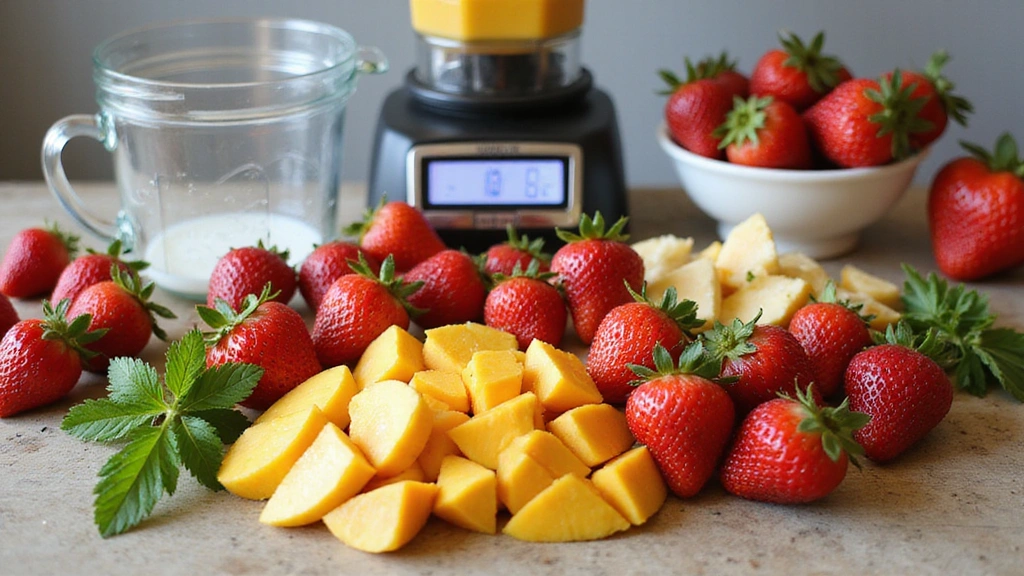
Gather all the necessary ingredients and equipment.
Make sure fruits are washed and prepped, with strawberries hulled and mango chunks peeled.
Ensure you have the right equipment like a blender and strainer at hand.
Check that your tea is brewing while you prepare other elements.
Step 2: Cook Tapioca Pearls
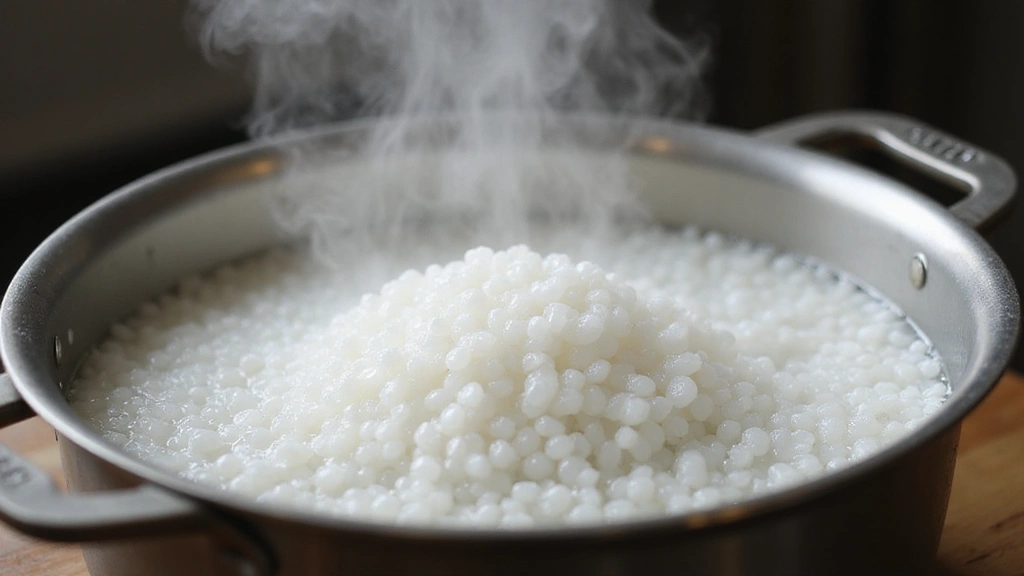
Bring the water to a rapid boil in a medium saucepan.
Add the tapioca pearls and stir frequently to prevent them from sticking.
Cook until the pearls become translucent.
Once cooked, drain and rinse under cold water to stop the cooking process.
Step 3: Brew the Tea
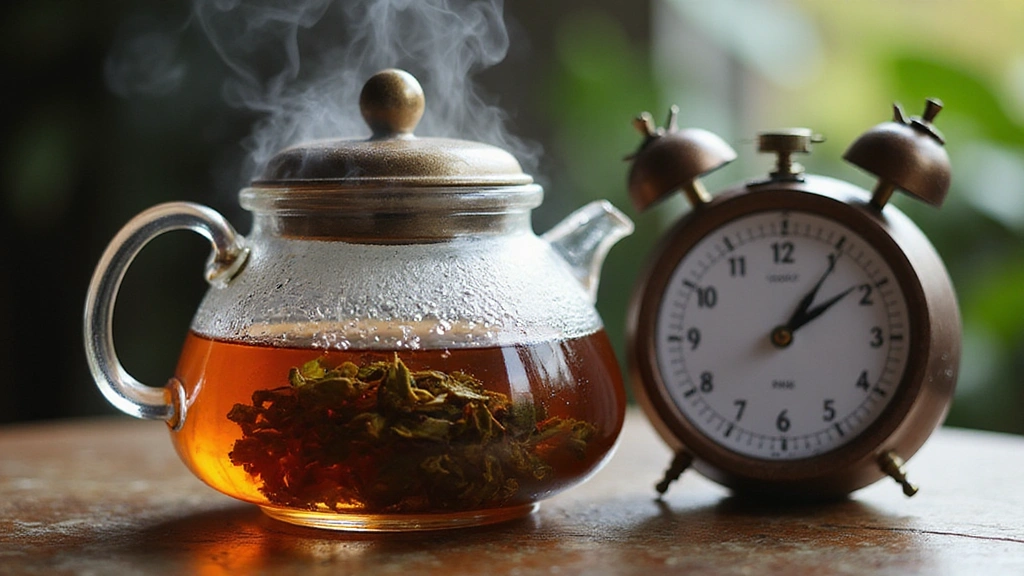
Boil water and pour over black tea leaves or bags.
Let the tea steep for 5-7 minutes to develop a strong flavor.
Remove the tea leaves or bags and allow the tea to cool.
Refrigerate to chill if desired.
Step 4: Blend the Fruit Puree

Place the strawberries, mango chunks, and sugar in the blender.
Blend at high speed until completely smooth.
Pause occasionally to scrape down the sides for even blending.
Strain the puree to remove any remaining pulp or seeds.
Step 5: Combine Tea and Fruit Puree
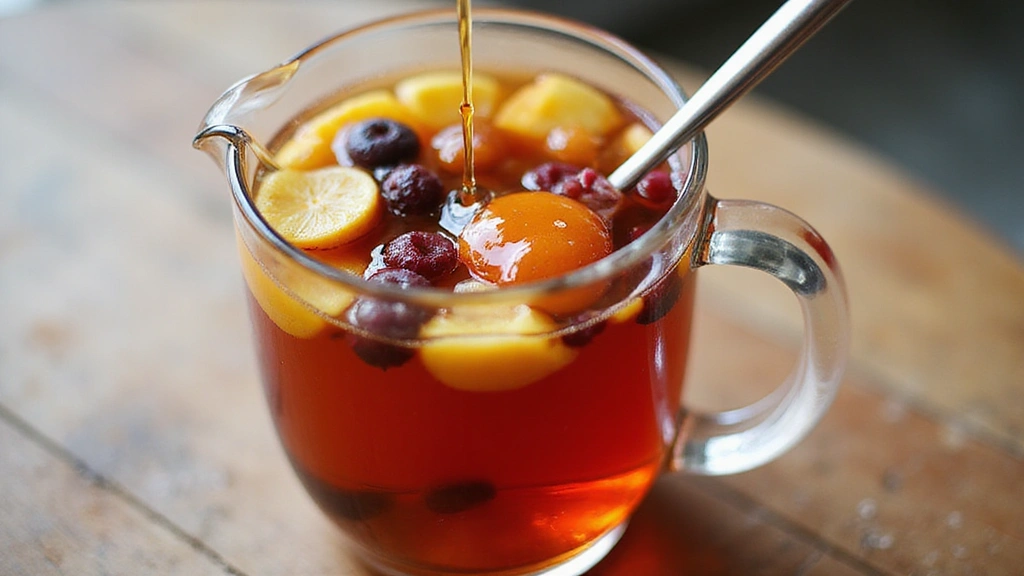
Mix the cooled tea with the strained fruit puree in a large pitcher.
Stir in the honey until fully dissolved.
Taste and adjust sweetness if necessary.
Refrigerate if you prefer a colder drink.
Step 6: Assemble the Bubble Tea

Place a portion of cooked tapioca pearls at the bottom of each glass.
Fill the glass with ice cubes to keep the drink chilled.
Pour the fruit tea mixture over the ice, filling the glass.
Leave some space at the top for stirring.
Step 7: Add Finishing Touches
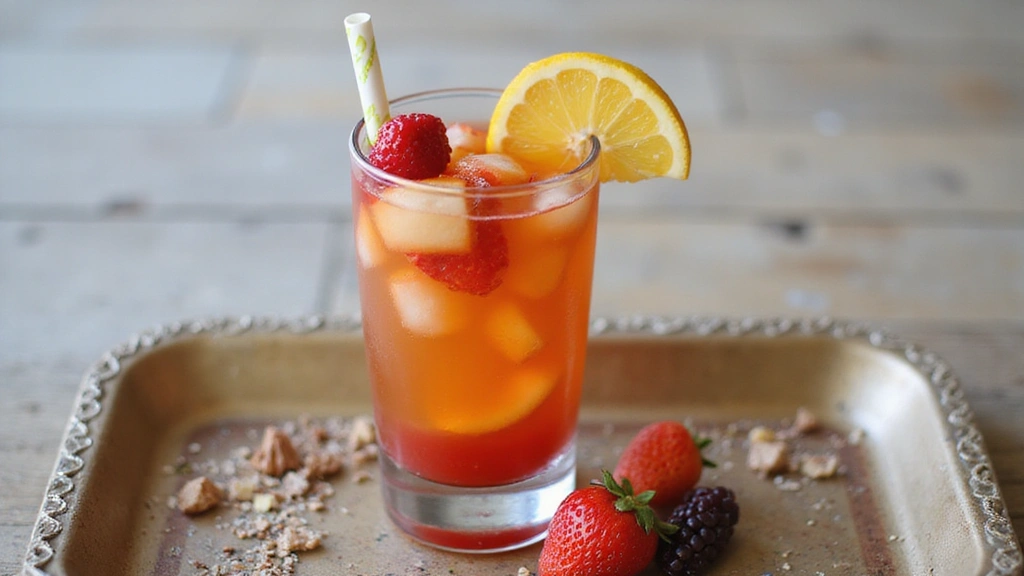
Insert a bubble tea straw into each glass.
Garnish with fresh fruit slices on the rim for an attractive presentation.
Serve immediately to enjoy the freshest flavors.
Encourage guests to stir before sipping to combine layers.
Step 8: Clean Up and Store
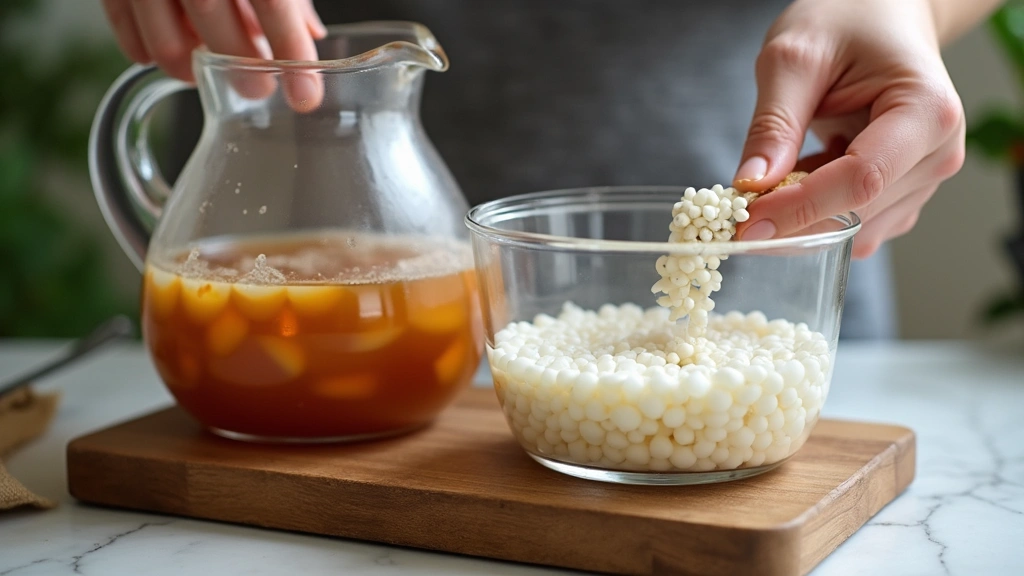
Clean the blender and other equipment used in the preparation.
Store any leftover fruit tea mixture in the refrigerator.
Keep cooked tapioca pearls in a sealed container submerged in water to maintain texture.
Use leftovers within a day for best quality.
Critical Timing and Temperature Guide
Cooking Tapioca Pearls: Boil for 10-15 minutes until translucent.
Look for even translucency with a chewy center.
Avoid overcooking to prevent mushy texture.
Brewing Tea: Steep tea for 5-7 minutes at 200°F (93°C).
Tea should be strong and aromatic.
Avoid under-steeping to prevent weak flavor.
Chilling Fruit Tea: Chill in the refrigerator for at least 30 minutes before serving.
Tea should be cold but not icy.
Avoid serving warm to maintain refreshing quality.
Pro Tips for Fruit Bubble Tea
• Ingredient Selection: Choose ripe, sweet fruits for the best flavor impact, focusing on strawberries and mango for their natural sweetness and aroma.
• Preparation Secret: Adding a pinch of salt to the puree can enhance the sweetness and balance flavors effectively.
• Temperature Management: Ensure the tea is completely cooled before mixing with the fruit puree to prevent dilution from melting ice.
• Texture Enhancement: Rinse tapioca pearls under cold water after cooking to stop the cooking process and maintain chewiness.
• Flavor Layering: Layering the tea and fruit puree without mixing initially allows for visual appeal and a dynamic flavor experience as they combine while drinking.
• Make-Ahead Strategies: Prepare the fruit puree and tea a day in advance and store them separately under refrigeration to save time on the day of serving.
• Restaurant-Quality Finishing Touches: Garnish with fresh mint leaves or a citrus twist for an aromatic, professional touch.
• Equipment Optimization: Use a hand-held frother to mix the final drink if a blender is not available to achieve a smooth consistency.
Troubleshooting Common Issues
• Tapioca Pearls Too Hard: Ensure pearls are boiled in rapidly boiling water and stirred frequently to prevent hard centers.
• Fruit Puree Too Thick: Adjust consistency by adding a little cold water or more tea until it reaches the desired thickness.
• Tea Too Bitter: Reduce steeping time or use a lighter tea blend to avoid overpowering the fruit's sweetness.
• Flavors Not Blended Well: Allow the drink to sit for a few minutes after stirring to let the flavors meld together.
• Drink Too Sweet: Balance sweetness by adding a splash of lemon juice or reducing added sugar in the recipe.
• Ice Diluting Flavor: Use frozen fruit instead of ice cubes to chill and enhance flavor without dilution.
Variations and Regional Differences
• Taiwanese Style: Focuses on the balance between sweet and floral flavors, often using jasmine tea and lychee or passionfruit.
• Japanese Matcha Variation: Incorporates matcha powder instead of black tea for a distinct green tea flavor and color.
• Thai Tropical Twist: Uses coconut milk and tropical fruits like pineapple and mango for a creamy, exotic taste.
• Western Smoothie Fusion: Combines traditional bubble tea elements with smoothie ingredients like yogurt or almond milk for a thicker texture.
Food Science Behind the Recipe
• Gelatinization of Tapioca: Understanding how heat causes the starch in tapioca pearls to gelatinize helps achieve the perfect chewy texture.
• Emulsification in Fruit Puree: Blending fruits creates an emulsion that stabilizes the mixture and prevents separation, enhancing mouthfeel.
• Flavor Release in Tea Brewing: Longer steeping times allow for more flavor compounds to be released from tea leaves, affecting taste intensity.
Frequently Asked Questions
What's the most common mistake people make when preparing Fruit Bubble Tea? The most common mistake is overcooking the tapioca pearls, resulting in a mushy texture instead of the desired chewiness.
Can I use frozen fruit instead of fresh? Yes, frozen fruit can be used and even helps keep the drink cold, but may require less ice to maintain flavor intensity.
How do I store leftover bubble tea? Store the tea mixture and pearls separately; pearls should be submerged in water to keep them soft and used within a day.
What type of tea is best for bubble tea? Black tea is traditional, but green or jasmine tea can be used for a lighter flavor profile.
Is there a way to make this drink sugar-free? Use natural sweeteners like stevia or monk fruit instead of sugar and adjust to taste.
How can I make this recipe vegan? Replace honey with agave syrup or maple syrup and ensure all other components are plant-based.
Why is my drink separating? This can happen if the fruit puree is too thick; blend longer or strain thoroughly to avoid separation.
Serving and Presentation Guide
• Traditional Presentation: Serve in a tall, clear glass to showcase the visual layers of the drink, with a wide bubble tea straw.
• Modern Take: Use mason jars for a rustic, trendy look, garnished with fresh fruit slices on the rim.
• Party Presentation: Serve in small, clear cups with mini straws for a fun, bite-sized version at gatherings.
• Elevated Style: Present on a decorative tray with a small bowl of extra cooked tapioca pearls on the side for customization.
Conclusion
Fruit Bubble Tea is a delightful blend of fresh fruit, tea, and chewy tapioca, perfect for any occasion.
With its vibrant colors and refreshing taste, it's sure to be a hit with friends and family.
Don't be afraid to experiment with different fruits and teas to find your perfect combination.
This recipe invites you to explore the fun and versatility of making your own bubble tea at home.

